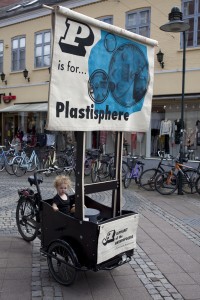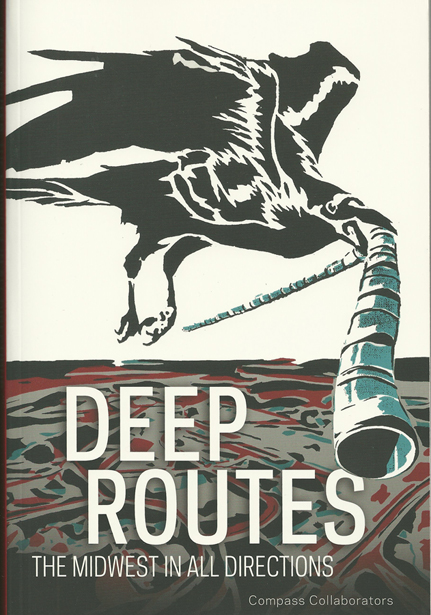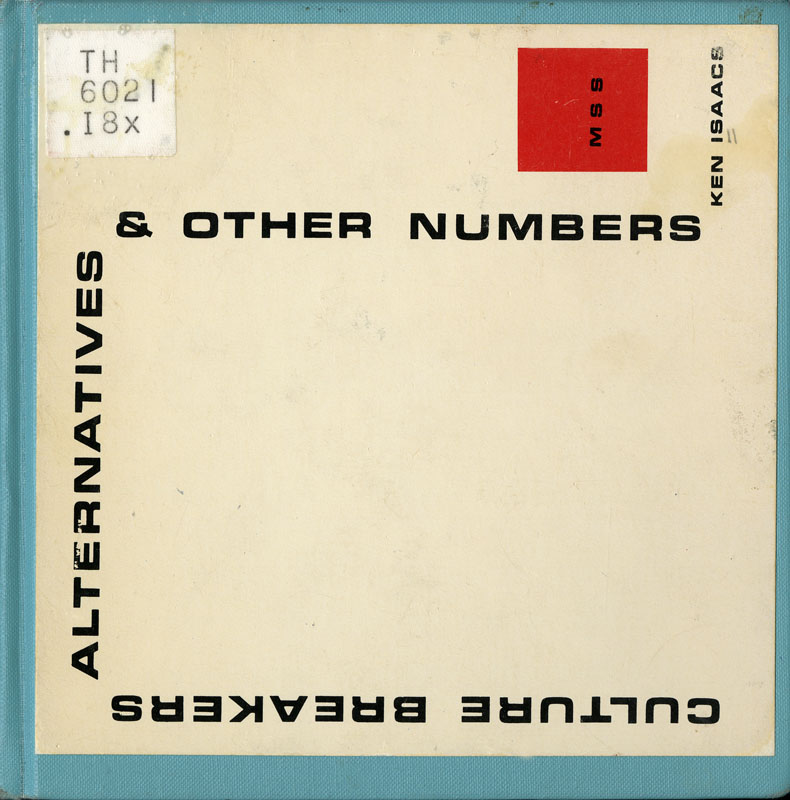Giving Harbor (Part 2 of 3)
Giving Harbor continued.
See Part 1.
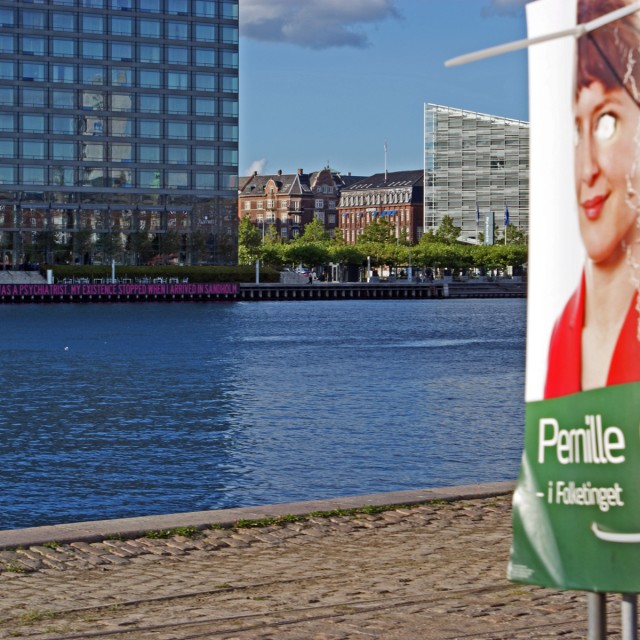
A defaced Konservative Folkeparti [Conservative Peoples’ Party] poster across from the sign — the party was summarily trounced in the elections.
Large parts of the Copenhagen harbor are private-public spaces. What this means is that the rights to the use of the moorings were sold to private companies and organizations that own buildings and property along the harbor. This poor decision was taken at a time when the city was in a bad financial situation. It was done to raise revenue for the city. Many people we talked with about the project were shocked by this information because they had a strong impression that the harbor was a public space accessible to everyone. The semi-privatization of the harbor is creepy because the politicians that made the decision to sell the rights did so without letting the public know how fundamentally the harbor was being reconfigured.
MAKING THE HARBOR SPEAK WITH A DIFFERENT VOICE
Metaphorically, to “give harbor” is to take care of another person, or group of persons, traditionally to let sailors from far away have a safe place to rest on their journey. Harbors were, and continue to be, a place where people from many backgrounds can interact–socially and commercially, establishing and learning about their place in the world. The generous, open, welcoming Denmark I fell in love with many years ago was in recent times hijacked by a vicious strain of nationalist conservatism that wanted to purge non-natives from having a significant role in the production of Danish daily life. This project, in a small way, is an attempt to fight back and insist on a more inclusive Denmark. This is important to me on a personal level, as an immigrant myself, albeit a more privledged one.
I owe a tremendous amount of gratitude and thanks to all the great people at Trampolinhuset [The Trampoline House] a user-driven cultural center for asylum seekers and their allies. One of our favorite places in the Nørrebro neighborhood where we live, Trampolinhuset is an excellent example of how art & social justice can overlap in concrete ways. Trampolinhuset produces an incredible amount of dignity for a population in Denmark that is persecuted for wanting nothing more than a secure place in this world.
Trampolinhuset was started by a group of cultural workers, artists, curators, and activists. These visionary folks are pushing at the boundaries of aesthetic practice. Instead of choosing a traditional approach to art making that involves moving a bunch of materials or concepts around to provide some kind of detached aesthetic experience, they are working directly with the socially ossified situation in Denmark: the asylum seeking process. They refuse to accept the current situation as “natural” or “given” as they know deeply it is racist and unjust. They have reordered social experience by creating a space that is safe for asylum seekers “to be human again.” They work with social configurations – how we both choose to group ourselves and are forced to group ourselves according to laws, spatial ordering of cities and neighborhoods, and so on – as their primary aesthetic medium. But this is only a starting point from which they depart very quickly into uncharted territory.
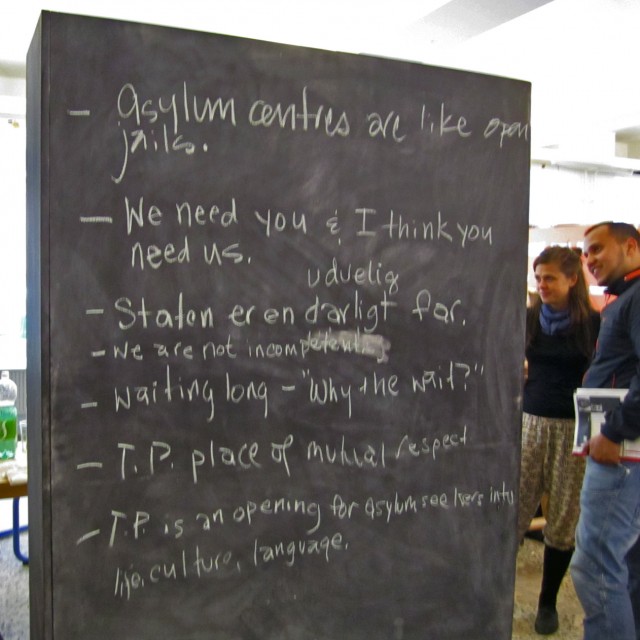
Liv and Faruz were two of the many participants in the workshop at Trampolinhuset.
We did the workshops to generate phrases for the Giving Harbor sign system. It wasn’t until the fourth attempt that we were successful in getting a critical mass of people to participate. Even then, it was a daunting effort. Amazingly on the day of the fourth workshop, a Trampolinhuset volunteer who spoke several languages, happened to be present. She initiated and led, along with others, live translation of the workshop process into four different languages: Danish, Dari, French and Arabic.
Coming up next: Part 3 – Why the sign says what it does & taking the sign down
Project Thank-yous:
I want to personally acknowledge and thank Tone Nielsen, Morten Goll, Søren Rafn, Liv Duvå, Rasmus Pedersen, Sami Saabet, Faruz, Mohammed, Carlos, Stan, and many of the great folks who come to and use Trampolinhuset and discussed this project with me. Thanks to Jonas Georg Christensen, and especially to Peter Olsen for his terrific production work and mad skills. Big thanks to publik and Kristofer Hultenberg for production of the vinyl letters and taking photographs of the installed sign. I also owe thanks to the fine folks at visAvis magazine who have been very supportive of this project. It would not have been possible without their support.
Radio Aktiv Sonic Deep Map (2013)
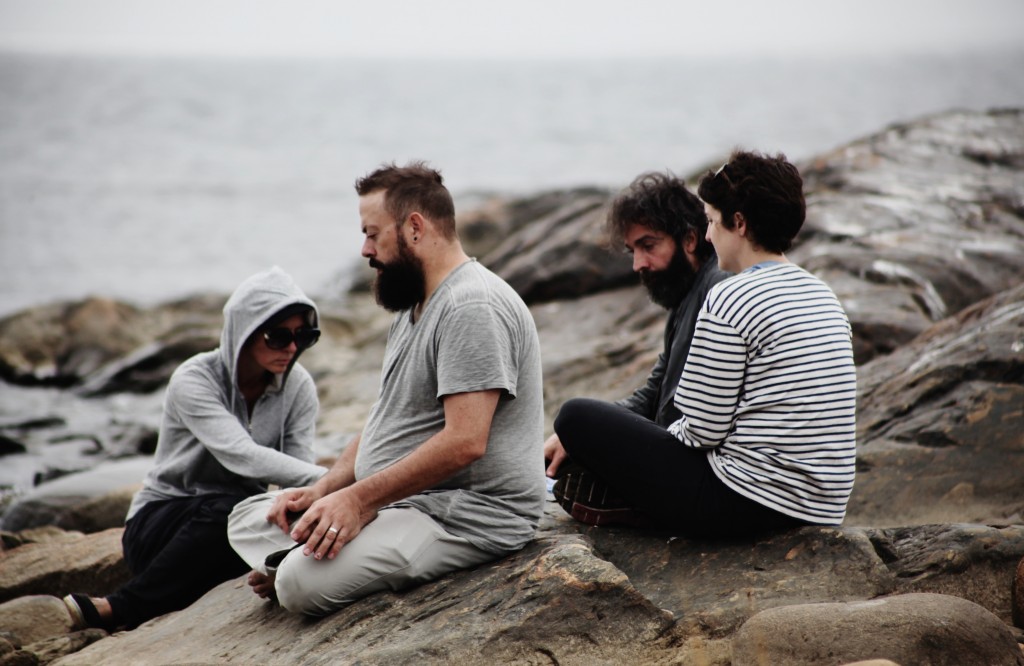
SUPERKILEN – Extreme Neoliberalism Copenhagen Style
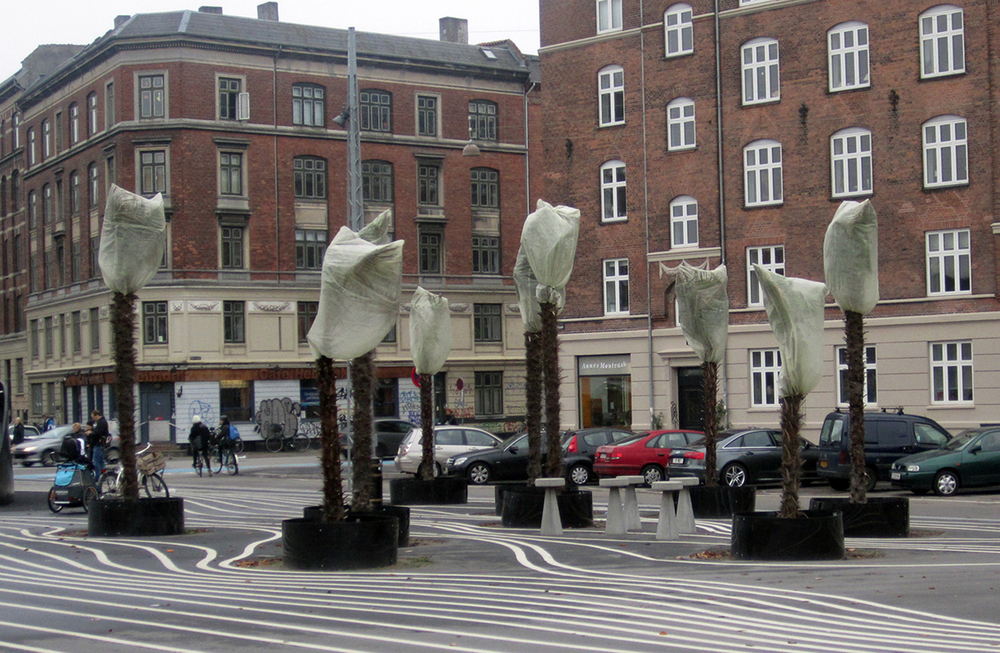
Read Brett's essay about the park.
Download our guide:
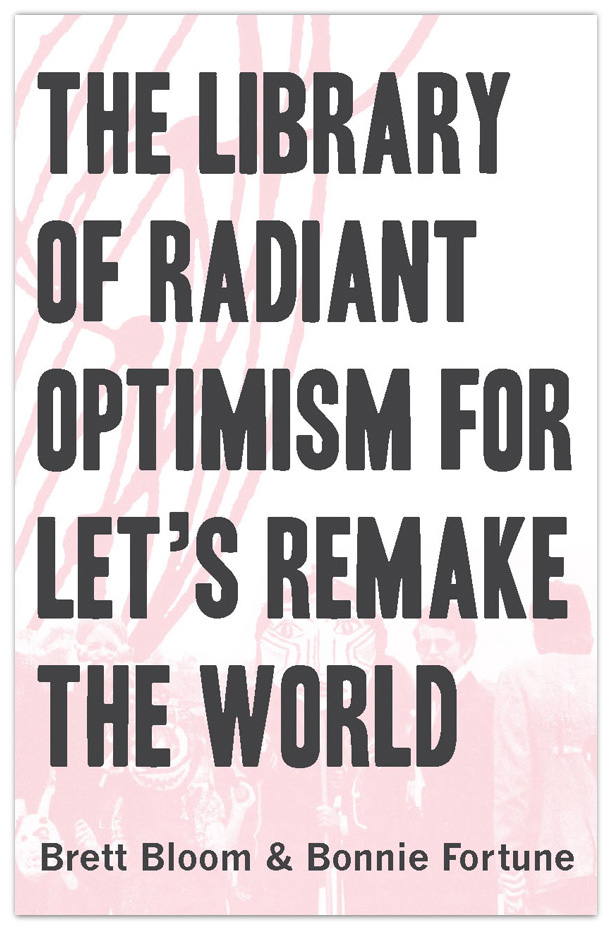
This is our guide to how-to books from the counterculture of the 60s and 70s. Click to get the download page.
Categories
- Agriculture (11)
- Animal sounds (1)
- Artist parents (19)
- Arts and culture (106)
- Bees (3)
- Book reviews (14)
- Books (18)
- Critical essays (5)
- Daily Photo (5)
- Design (36)
- Dirt (11)
- Environmental activism (43)
- Exhibitions (24)
- Farms (11)
- Forest (7)
- Friday connect (15)
- Growing (42)
- Habitat (38)
- Homesteading (16)
- Interviews (15)
- Kitchen (14)
- Living structure (9)
- MISC (15)
- Mythological (2)
- Neighborhood (83)
- Ocean News (1)
- Our Art Work (21)
- Personal – Design/Art (3)
- Play (2)
- Playground (4)
- Projects (21)
- Public space (53)
- Resilience (13)
- Sea Side (2)
- Sojabønner (2)
- Tofu (8)
- Vermont correspondence (7)
- Water (3)
- Wednesday picture (31)
- Workshop (1)
Video interview:

Watch our interview of SeedBroadcast, a mobile project that is part seed library and part seed-saving-story-collecting machine-recording the stories of seed saving, farming, and food sovereignty work being done around the US.
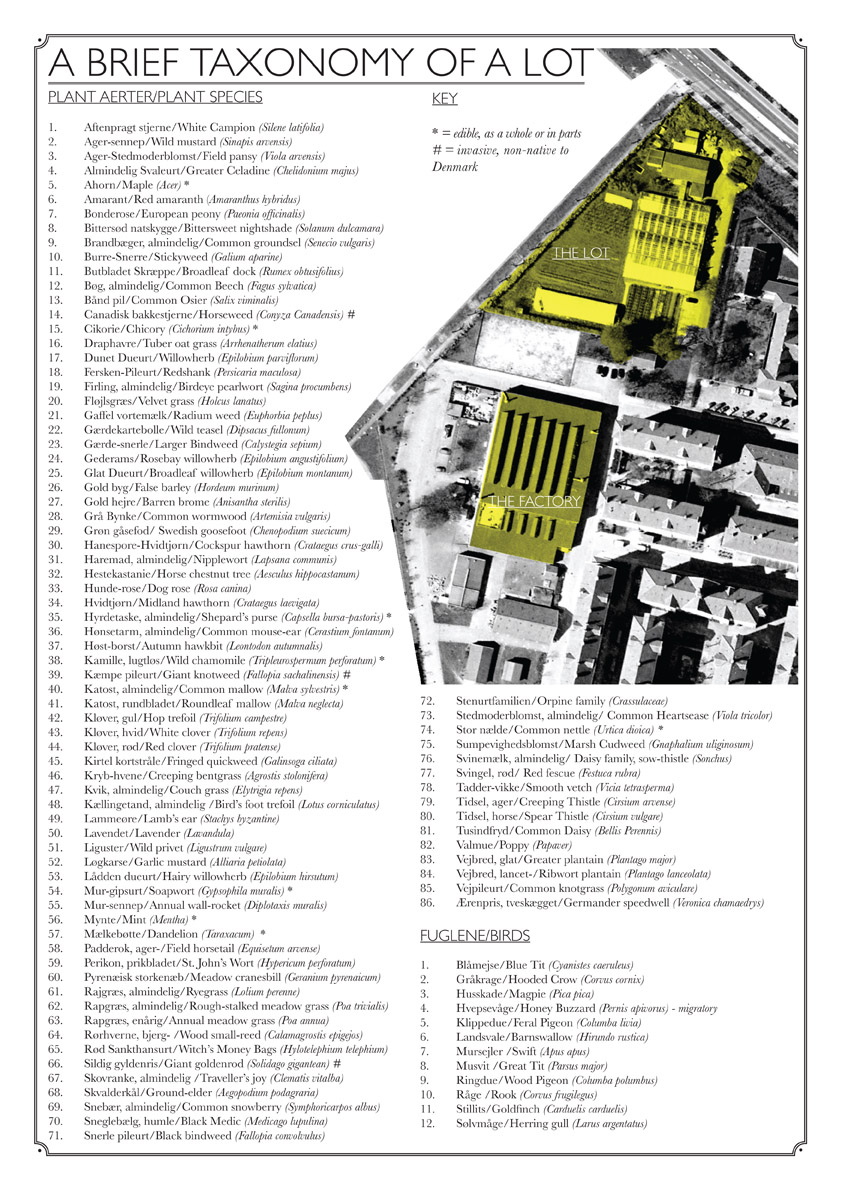
Download a poster Bonnie made about biodiversity in a vacant lot in the Amager borough of Copenhagen, in collaboration with biologist, Inger Kærgaard, ornithologist, Jørn Lennart Larsen and botanist, Camilla Sønderberg Brok: A BRIEF TAXONOMY OF A LOT

We made and installed a network of bat houses in Urbana, Illinois, to support the local and regional bat population, but also to begin a conversation about re-making the built environment.
READ MORE
BOOK REVIEW:
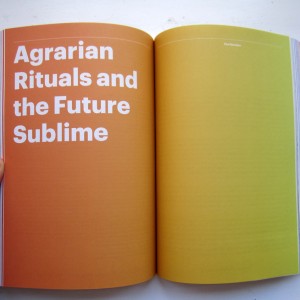
We write often about artists and art groups that work with putting ‘culture’ back in agriculture. Here is a new favorite: myvillages, a group of three women based in Germany, the Netherlands, and the UK. Read more...
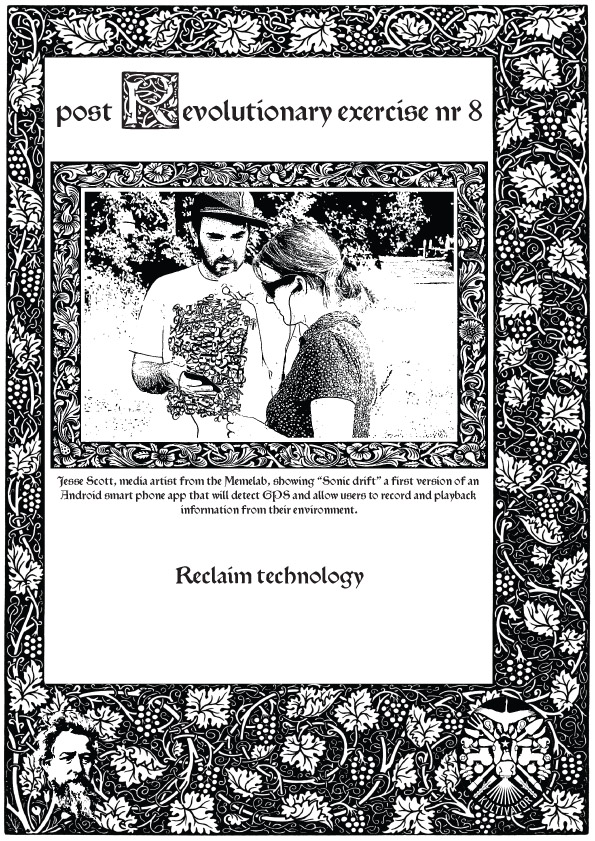
Post Revolutionary Exercises
We really admire the dedicated hard work of Kultivator who seeks to fuse agriculture and art in their work. Click this sentence to get a PDF of their poster collection called "Post Revolutionary Exercises."
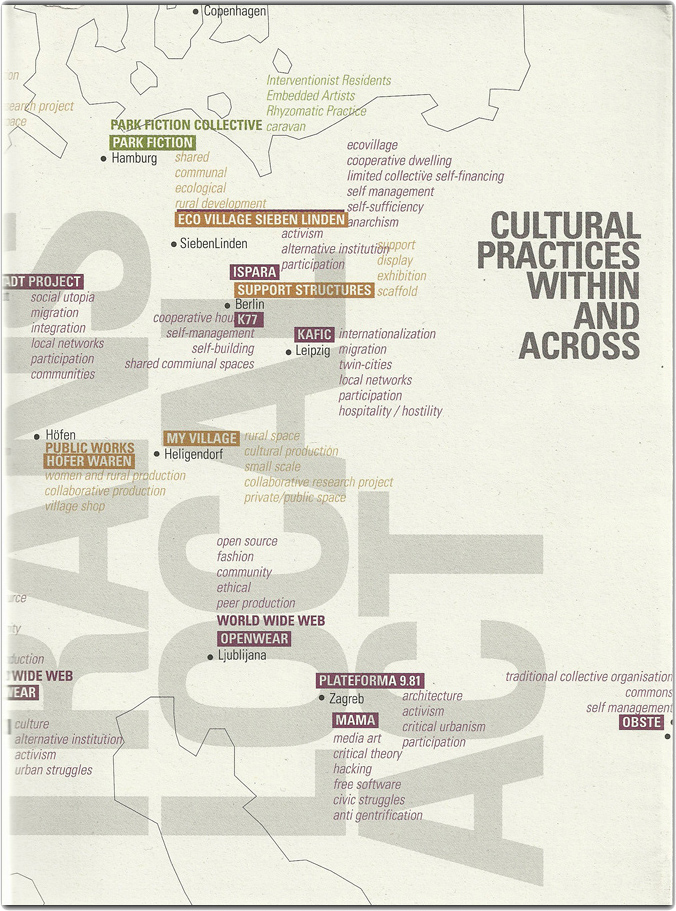
Cultural Practices Within And Across
This amazing book networks urban and rural resilience and sustainability projects around the world. Deeply inspiring projects in Romania, Paris, San Francisco, and elsewhere.
• Read our review of the book.
• Buy the book.
• Download the book.



